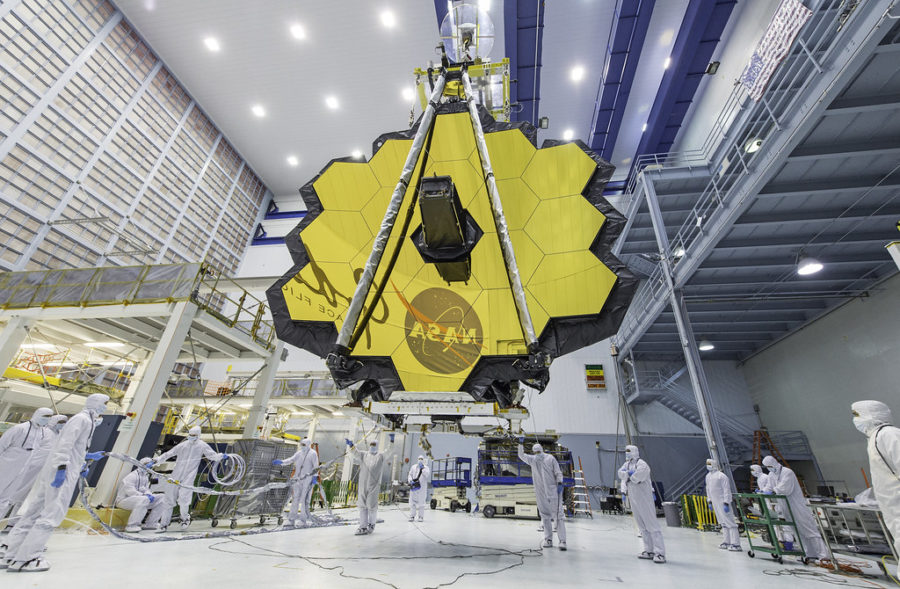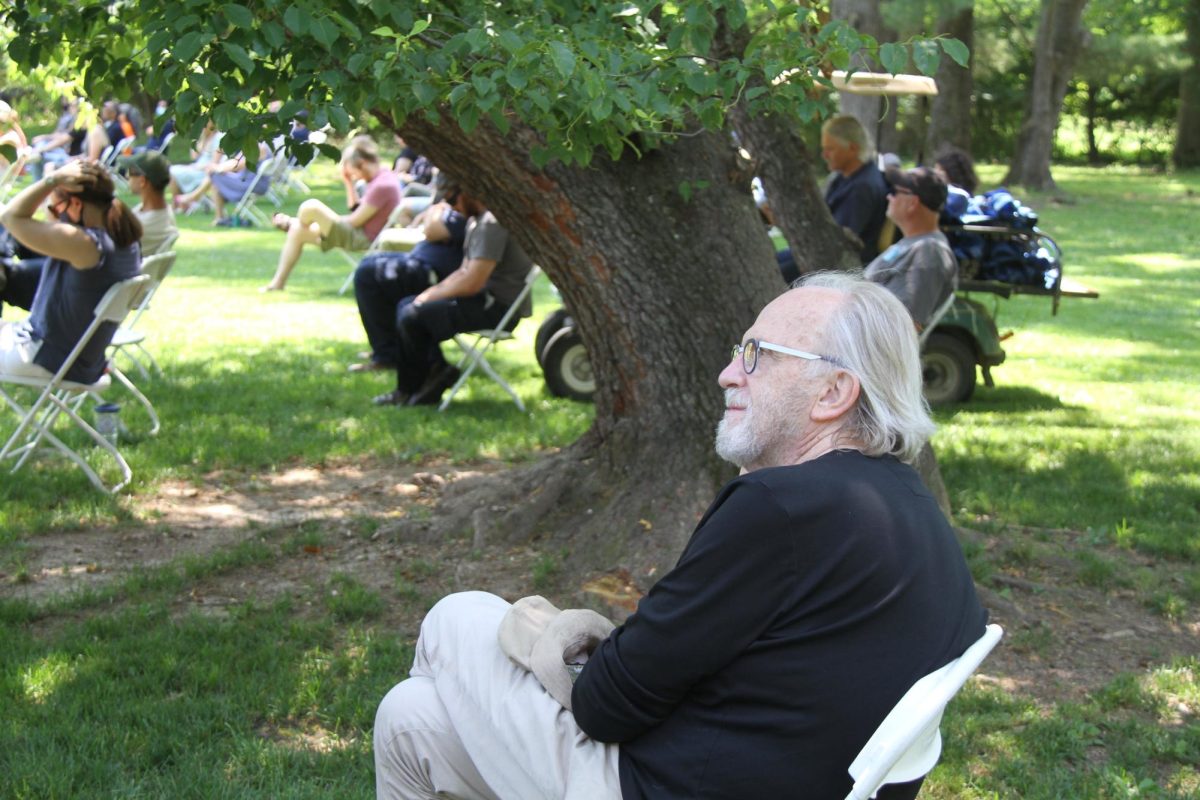The James Webb Space Telescope Could Answer the Unknown
The James Webb Space Telescope could change how we learn about our universe forever. Photo courtesy of NASA
February 21, 2022
For millennia, the secrets of the universe have been kept from us due to our lack of technology. Questions such as the existence of dark matter, origins of the universe, among others things have kept scientists on the drawing board for years. Fortunately, the James Webb Space Telescope (JWST) may play a key component in providing these answers.
On December 25, 2021, the JWST was launched into orbit from Europe’s Spaceport in French Guiana. Using infrared light, the JWST can see celestial bodies up to 13.6 billion light years from Earth. Infrared light, which is radiated from heat, cannot be seen by the naked eye, and will be used to track light that is extremely far away from us. To achieve this, the telescope must be kept away from any major heat source, or it runs the risk of blinding itself. A tennis court sized sun shield is attached to the telescope, in order to keep the sun’s light and heat from reaching its lenses. The telescope will orbit 1.5 million kilometers away from Earth, taking around 1 month to reach this orbit. This distance is far beyond human reach, meaning if it damages or breaks on the journey, there is no way to repair it. As such, NASA plans to have the telescope operational for only 10 years, in which time it may provide some answers to the origins and nature of our universe. Sophomore Jamie Creasi commented “This is a huge advancement for both the science and technology fields. Even if the telescope doesn’t work, we can still learn from the telescope’s mistakes, and apply them to any future projects.” Sophomore Amelia Sentveld adds on “The telescope could be used to search for life and see the coagulated dust that would eventually form the universe.” Sentveld continued, “However, we must acknowledge that we may end up empty-handed.”
In all, NASA’s main goals are to examine the celestial objects that first formed after the Big Bang, learn more about how galaxies form and change, discover evidence on dark matter, and study the atmospheres of distant exoplanets. If the JWST does provide answers to the previously stated questions, it could completely overhaul how we approach space travel, as well as our theories on how the universe formed. The telescope findings could further drive PDS students’ curiosity concerning matters on the universe, or spark a new interest that they were not even aware of. Whether this telescope fails or succeeds, it will be remembered as a revolutionary piece of equipment.






